Solo Trip to Ladakh: Complete Travel Guide for Independent Explorers
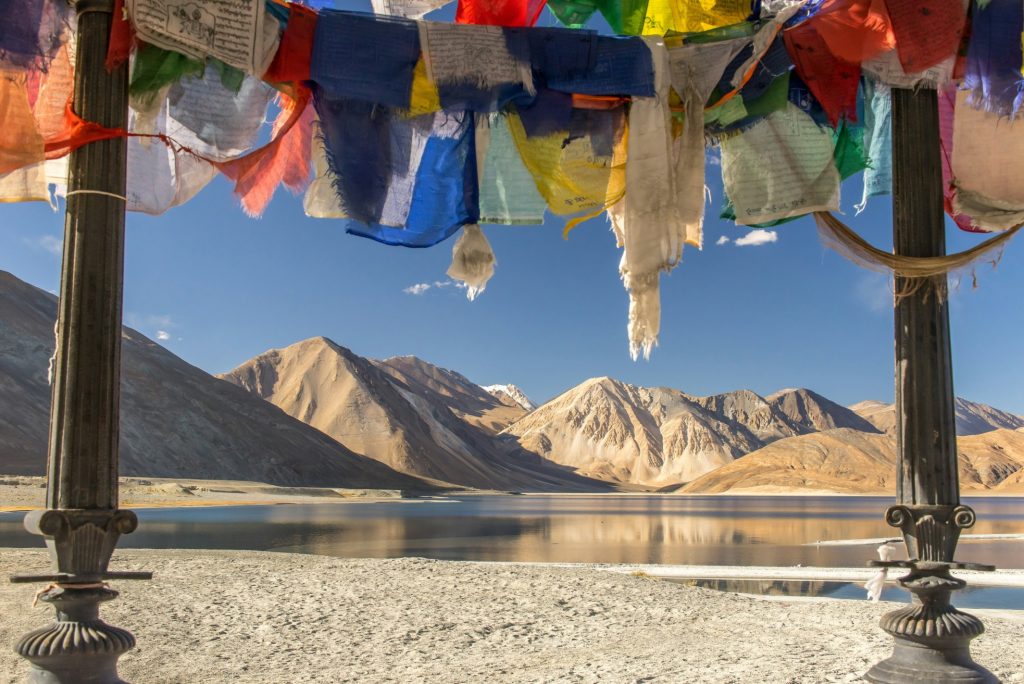
Ladakh Beyond the Obvious Ladakh is often imagined as a land of high passes, barren mountains, and frozen lakes. But for a solo traveller, there’s more than just dramatic landscapes. It’s a place where silence speaks, locals smile easily, and every road leads to a story. Traveling solo in Ladakh gives you the space to meet people, listen to their stories, and maybe hear your own thoughts more clearly. Whether you’re planning a simple Ladakh trip itinerary or booking one of the flexible Leh Ladakh tour packages, this guide gives you a different lens to explore Ladakh: one that values depth over speed. Tip: Don’t pack your schedule with stops. Let your Ladakh trip breathe. The most memorable moments often come unplanned. Stay With Locals: A More Meaningful Way to Travel There’s something different about Ladakhi hospitality. In small villages like Likir, Turtuk, or Hanu, families open their homes to travellers, offering not just a bed, but warmth and stories. Sharing meals, joining morning routines, and learning local customs all become part of your journey. Many modern Ladakh travel packages now include homestays. These not only help you experience real Ladakh holidays, but also support the local economy. It’s a win-win, especially for solo travellers looking for a safe and meaningful stay. Tip: Seek out women-run or community-approved homestays. They’re trustworthy and often lead to the most enriching conversations. Beyond Pangong: Hidden Paths Worth Finding Everyone talks about Pangong Lake and Khardung La, but Ladakh has trails that are quieter, more soulful, and just as beautiful. The Dah and Hanu region, home to the Drokpa community, is rarely visited but full of character. Or try the routes around Rumbak Valley, great for soft treks and wildlife. These aren’t your typical Leh Ladakh tour packages stops. And that’s why they matter. They give you time to walk slowly, speak with locals, and actually feel the place instead of just photographing it. Tip: Local guides aren’t just helpful—they’re essential. Many know hidden trails and offer insight you won’t find online. Time Your Trip for Culture, Not Just Climate Most travellers visit Ladakh between May and September, when the roads are open and the skies are clear. But for solo travellers, timing your trip with cultural festivals can make the experience even more powerful. Hemis Festival (July): Colourful dances and spiritual music Yuru Kabgyat (June): Held at Lamayuru, quieter but full of energy Sindhu Darshan (June): Celebrating the Indus and India’s unity These aren’t just performances; they’re expressions of Ladakhi identity. Attending even one can add so much richness to your Ladakh travel itinerary. Tip: Arrive in Leh at least two days before heading higher. You’ll enjoy the festival more if you’re well acclimatised. Silent Moments: The Spiritual Side of Ladakh Sometimes, solo travel is less about moving and more about pausing. In Ladakh, monasteries like Lamayuru, Diskit, and Phuktal invite you to do just that. You don’t need to be religious to feel something inside those quiet halls. Staying overnight at a monastery or even just sitting quietly during a prayer session can shift your whole journey. For many, this becomes the heart of their Ladakh trip. Tip: Be respectful. Ask for permission before joining any rituals or meals. And when in doubt, just sit and observe. Smart Travel Tips for Solo Explorers Connectivity: Postpaid SIMs from BSNL and Jio work best. Money: Carry enough cash, especially outside Leh. Clothing: Dress in layers. The weather turns quickly. Transport: Shared cabs from Leh are budget-friendly and safe. Tip: Always keep your Ladakh itinerary printed and your permits in a folder. The signal can disappear without warning. This version of Ladakh isn’t fast or flashy. But if you’re looking for something personal, peaceful, and powerful, this solo journey might just be the one that stays with you forever. Day-by-Day Itinerary for Solo Travelers Seeking Meaningful Adventures This Ladakh journey isn’t about ticking boxes. It’s about taking the road less travelled — literally and figuratively. This itinerary is for those who want their solo trip to mean something: to connect, to reflect, and to explore. Day 1: Settle In — Let Leh Welcome You Ladakh’s altitude isn’t gentle. So when you arrive in Leh, let yourself slow down. Rest, hydrate, and give your body a day to adjust Take a short stroll to Leh Market or visit Shanti Stupa Organize local essentials — SIM card, permits, accommodation Tip: Use this downtime to adjust your plans. Local advice can often be more useful than travel blogs. Day 2: Drive to Likir — Start Small, Go Deep Just a short drive away, Likir offers calm and culture Explore the hilltop monastery with its giant Buddha statue Stay in a village homestay; talk, share tea, ask questions Tip: A small village like Likir is ideal for a solo start — safe, personal, and deeply rooted in tradition. Day 3: Ancient Walls and Empty Trails — Alchi & Mangyu Visit Alchi Monastery — home to intricate frescoes and quiet corners Hike toward Mangyu — one of Ladakh’s least visited but oldest monasteries There’s a quiet here you’ll rarely find elsewhere. Tip: There won’t be shops en route, so bring your own snacks and water. Simplicity is part of the experience. Day 4: Journey to Turtuk — Another Side of Ladakh Travel via the iconic Khardung La Pass to reach Turtuk in Nubra Valley Explore a village with Balti roots, riverside paths, and stories from another time Stay in a homestay nestled among apricot trees Tip: Turtuk is ideal for solo explorers — it’s peaceful, welcoming, and less crowded than other stops. Day 5: Sand, Statues, and Stillness — Diskit Visit the Diskit Monastery, with views that stay with you Stop by the Hunder dunes for a rare camel ride Camp under the stars or stay in a quiet guesthouse Tip: Ask your host about the old trader routes — you’ll get tales you won’t find in any brochure. Day 6: A
Leh-Ladakh Travel Guide: Everything You Need for an Epic Trip
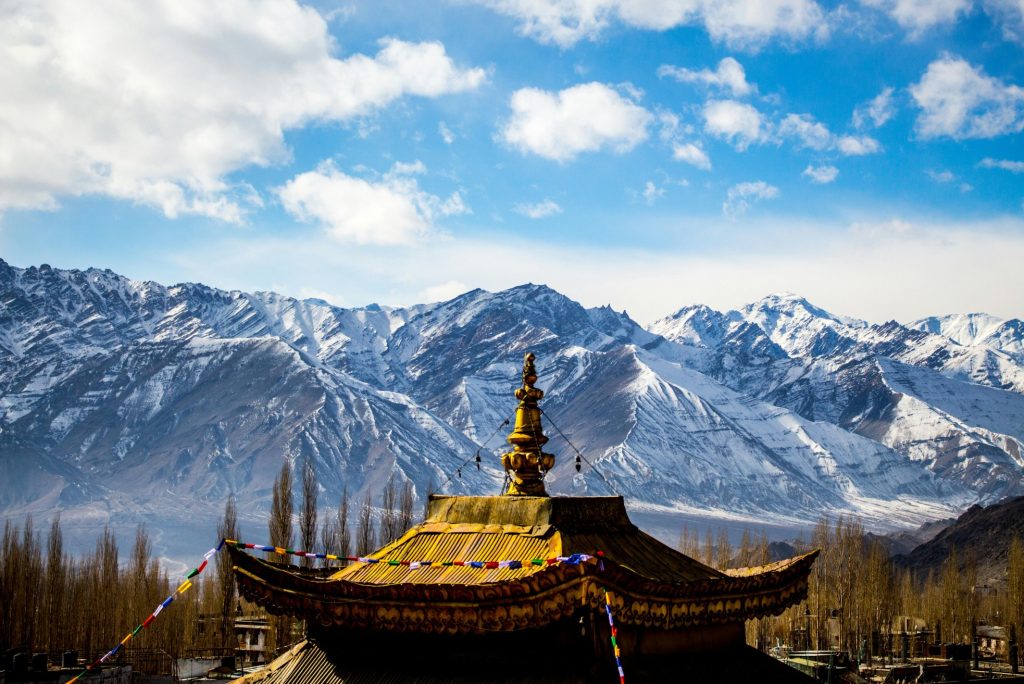
Why Ladakh is the Ultimate Travel Dream Set in the extreme north of India, Ladakh is a land of dream-like beauty and rugged mountains. Known for its dramatic landscapes, vast valleys, and ancient monasteries. A journey through Ladakh offers a once-in-a-lifetime experience of natural wonder, cultural discovery, and adventure. Whether you’re embarking on a Ladakh road trip, planning a Ladakh trekking expedition, or simply looking for immersive Ladakh sightseeing, this region has it all. With growing interest in Leh Ladakh tourism, many travelers now seek curated Ladakh tour packages or build their own Ladakh trip plan to explore this high-altitude desert. Best Time to Visit Ladakh The best time to visit Ladakh is from May to September, when roads are open and the weather is clear. This is also the ideal period for a Ladakh adventure tour, including treks and bike trips but, if you’re planning to visit in Winters (December–February), you’ll find it a bit harsh but it is perfect for extreme routes like the Chadar Trek, which is known as one of the most thrilling experiences in Ladakh trekking. Tip: For a classic Ladakh trip itinerary, choose June or July as these months have fewer roadblocks and perfect visibility for photography and trekking. Ladakh Trip Essentials: Permits, Acclimatization & Safety Permits: During your visit, you will require Inner Line Permits (ILP) in places such as Nubra Valley, Pangong Lake, and Tso Moriri. When you choose Leh Ladakh tour packages, these are usually taken care of. Acclimatization: Ladakh is located at an altitude of over 10,000 feet. I recommend spending at least two days in Leh to acclimatize before starting your Ladakh trip—it’s essential for a safe and enjoyable journey. Safety: Drink plenty of water, do not consume alcohol during the first couple of days, and do not force yourself in case you become dizzy or breathless. Tip: Always carry copies of your ID and permits. If planning a DIY Ladakh road trip, you should pre-print maps as network coverage is limited in remote areas. How to Reach Ladakh & Road Trip Routes There are two iconic routes that you can take for a Leh Ladakh road trip: Srinagar to Leh (434 km) – Open earlier and less steep. Manali to Leh (474 km) – Adventurous, scenic, but more challenging. A Ladakh road trip itinerary often includes stops in Keylong, Sarchu, or Jispa. These are all ideal for rest and acclimatization. Tip: Consider combining both routes in your Ladakh trip plan — travel via Srinagar and return via Manali for a full Himalayan loop. Tour Packages vs. DIY Planning You can either build your own Ladakh itinerary or book a Ladakh trip package through a good and reliable tour company. Most of the Leh Ladakh tour packages include stays, meals, transfers, and permits, which makes it an easy and convenient choice for first-time visitors or groups. DIY travelers can make their own Ladakh travel itinerary, with the help of blogs, forums, and local suggestions online. Tip: If you’re not sure where to start, start by comparing a few Ladakh travel package options online and match them with your ideal Ladakh holiday style, curate it just like you like it. Where to Stay in Ladakh Ladakh offers a range of stays — from cozy guesthouses and eco-camps to boutique homestays and luxurious hotels. Leh has the widest selection, while areas like Pangong, Nubra, and Tso Moriri offer rustic camps and homestays. Tip: Book your accommodations in advance during peak months, especially if your Ladakh tour itinerary includes remote stops like Hanle or Turtuk. Trekking in Ladakh: Top Routes to Know Trekking in Ladakh is one of the most amazing experiences one can have. Some of the popular Ladakh trekking routes include: Markha Valley Trek: Beginner-friendly and scenic (7–9 days). Sham Valley Trek: Short and easy, great for acclimatization (2–3 days). Chadar Trek: A winter-only trek on the frozen Zanskar River. Snow Leopard Trek: Best for wildlife and high-altitude adventure. Tip: For a first-time trek, add Sham Valley to your Ladakh trip planner. It’s short, scenic, and helps you get used to the terrain before taking longer routes. Quick Summary: Planning Your Leh Ladakh Trip Travel between May and September Choose a mix of Ladakh sightseeing, road tripping, and trekking Spend 2 days acclimatizing in Leh Compare multiple Leh Ladakh tour packages itinerary options Get your permits and ID proofs ready in advance Tip: Save this guide as a reference while finalizing your Ladakh travel itinerary. This will help you cover all the essentials without missing out on hidden gems. 7-Day Ladakh Trip Itinerary: Perfect Blend of Road Trip, Culture & Adventure Whether you’re crafting a Leh Ladakh tour itinerary from scratch or customizing a Ladakh tour package that matches your vibe, here is a day-wise guide packed with top experiences, amazing drives, and hidden gems. Day 1: Arrival in Leh & Acclimatization Arrive at Leh Airport (3,500m altitude) Check in and rest for some time. Acclimatization is Important! If you are feeling fine by late afternoon, take a stroll through the Leh market and visit the Shanti Stupa. Tip: Make sure to stay hydrated and avoid alcohol for some time. This first day sets the tone for your entire Leh Ladakh trip. Day 2: Local Ladakh Sightseeing – Leh Highlights Visit Magnetic Hill, Gurudwara Pathar Sahib, and the confluence of Zanskar & Indus Rivers. Next, you can explore Leh Palace, the Hall of Fame Museum, and monasteries like Thiksey and Shey. Tip: You should include this day in every Ladakh trip itinerary to soak in the history, culture, and landscapes before you hit the road. Day 3: Leh Ladakh Road Trip to Nubra Valley via Khardung La Drive to Nubra Valley via Khardung La (world’s highest motorable road at 18,380 ft) Visit Diskit Monastery and the giant Buddha statue Explore Hunder’s sand dunes and ride the Bactrian camels Tip: Book your Nubra stay in advance. Many Leh Ladakh tour packages
Top 5 Places to Visit in India (Hidden Gems Edition)
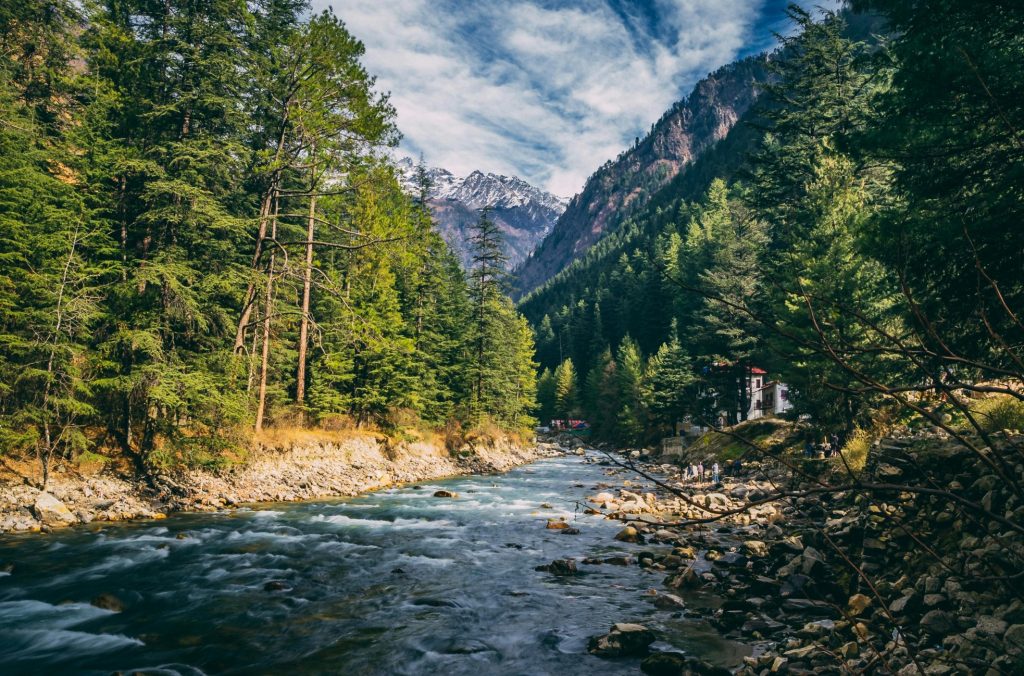
India is not just the land of the Taj Mahal and Jaipur. It’s a treasure chest of hidden gems, peaceful places, and unique travel experiences. Whether you’re seeking the mountains, cultural stories, remote villages, or something completely offbeat, this guide has you covered. Wondering what to see as a tourist in India, or where is the best place to start an India tour? Then this list is made just for you, with off-the-beaten-path India destinations that are ideal for solo travelers, culture vultures, and anyone who just likes to explore. Let’s explore some of India’s best-kept secrets that promise unforgettable experiences. 1. Spiti Valley, Himachal Pradesh Type: Remote · Scenic · Peaceful Best For: Solo travel · Nature seekers · Photographers Recommended Stay: 5–6 days Spiti Valley is a stunning cold desert nestled between Tibet and Himachal Pradesh. It is not like the bustling streets of Manali or Shimla, and that is what makes it a rough and unrefined travel experience; picturesque brown mountains, centuries-old monasteries, clear blue skies, and nights full of stars. What to Do: Visit Key Monastery, perched like a fortress on a hilltop, offering breathtaking views and centuries of spiritual history. Trek to Chandratal Lake, known as the moon-shaped jewel of the valley Stay in traditional homes in villages like Langza or Komic Spot wildlife in Pin Valley National Park Why It’s Special: Spiti is like being in a different world. It is one of those places in India that you just have to visit; it will make you speechless with its silence and greatness. Quick Tip: Be prepared for cold weather, even during the summer months. The roads to Spiti are typically open from May to October, and if you’re traveling from Delhi or Chandigarh, plan for at least a week to truly experience the region. While you’re there, don’t miss trying Thukpa, a warming Tibetan noodle soup that’s perfect for chilly evenings, or time your visit around the Ladarcha Fair in July, when locals from across Spiti gather for trade, culture, and celebration. 2. Ziro Valley, Arunachal Pradesh Type: Rural · Cultural · Green Best For: Cultural India trip · Nature lovers · Backpackers Recommended Stay: 3–4 days In the remote northeast of India, Ziro Valley is surrounded by dense pine forests and colorful rice paddies. It offers the dwelling of the Apatani tribe, who are closely related to nature and have strong cultural backgrounds. What to Do: Attend the Ziro Music Festival (September) for indie music under open skies Trek through lush farms and bamboo trails Stay in tribal homestays and learn about local farming and cooking Explore Apatani craft markets and village life Why It’s Special: Ziro is one of the most peaceful places in India. There are no honking cars, no tall buildings, just nature and warm people. It’s the definition of a hidden gem, India. Quick Tip: Reaching Ziro Valley takes some effort. You’ll need to fly to Guwahati or Dibrugarh and then drive the rest of the way. But that journey is exactly why the valley remains beautifully untouched. 3. Hampi, Karnataka Type: Historic · Scenic · Adventurous Best For: History buffs · Solo travelers · Budget travelers Recommended Stay: 2–3 days If you’re wondering, “What’s the best place to visit in India for 3–4 days?” Hampi is a top contender. It was once the grand capital of a mighty empire; now it is an enormous open-air museum, with ancient temples, grand ruins, and huge boulders that look like they were taken right out of a fantasy movie. What to Do: Visit Virupaksha Temple and Vittala Temple (with its famous musical pillars) Watch the sunset from Matanga Hill Rent a bicycle and explore the ruins at your own pace Cross the river to visit hippie cafes and stay in bamboo huts Why It’s Special: Hampi offers history, adventure, and scenery. It is safe, entertaining, and a perfect match for those traveling alone in India or couples seeking an alternative experience. Quick Tip: Hampi can be visited between October and March, which is the best time as the weather is pretty good and favourable to carry out explorations. It is also well connected to Goa and Bangalore and can be conveniently incorporated in a South India travel itinerary. Pro Travel Tips Whether you’re visiting India for 4 days or 4 weeks, keep these tips in mind: Travel Slow: Don’t rush to see everything. One region at a time is better than ticking boxes. Homestays > Hotels: They offer authentic experiences and help local communities. North East India = Goldmine: If you love peaceful places and rural tourism, this region is perfect. In remote areas, cash is still the preferred mode of payment, so it’s wise to carry some with you. Always carry a copy of your ID, especially in border states like Arunachal. In places like Hampi, local bike rentals are easily available, and staying in budget guesthouses or hostels can help stretch your travel funds while still offering a great experience. 4. Kakkathuruthu, Kerala Type: Rural · Backwater · Quiet Best For: Couples · Nature lovers · Slow travel Recommended Stay: 2 days Have you ever heard of an island called Kakkathuruthu or Crow Island? hidden in the calm waters of the Vembanad Lake in Kerala, this small green island has been one of the most peaceful secrets of India. Time here is at its own slow pace. No cars, no hotels. just plain little houses, silent fishing boats, and palm trees whispering gently in the wind. No wonder National Geographic claimed it as one of the most beautiful places in the world to see the sunset. What to Do: Glide across the backwaters in a canoe ride Walk or cycle around the island through lush green paths Watch thousands of crows fly back home during sunset—an unforgettable sight Stay with local families and enjoy traditional Kerala food Why It’s Special: If you’re seeking peaceful places in India that few travelers visit, Kakkathuruthu is the perfect choice.
Top 7 Places to Visit in Istanbul & Experiences You Can’t Miss

Istanbul is a city like no other, bridging two continents and blending its history, culture, and modern energy into one unforgettable experience. Every corner of this place has its own story and pretty tale to share and every new visitor’s fascination discovers something amazing and breathtaking because of Istanbul’s rich history, super markets buzzing with activity and its spectacular beauty. Whether you’re drawn to its historical charm or its lively atmosphere, Istanbul offers a journey that stays with you long after you leave. Everyone will discover something they love about Istanbul because it has a wide range of experiences to offer. Whether it is its beautiful historical palaces and mosques, a wide variety of food exploration, or the experience of sailing across the Bosphorus, Istanbul is like a museum that invites tourists from around the world to explore its history, culture, and art. These are the top seven attractions in Istanbul that every visitor should see, along with the unique experiences each location has to offer. Hagia Sophia Hagia Sophia stands as the architectural gem of Byzantine times since its initial construction occurred in 537 AD. Istanbul’s rich heritage is displayed through this building which began as a church transformed into a mosque and re-established as a mosque for present-day use. The architectural masterpiece combines its enormous dome with intricate mosaics which meet beautiful Islamic calligraphy. Things to Do: You can view remarkable Byzantine mosaics at Hagia Sophia that show images of Christ as well as the Virgin Mary and angels. Admire the central dome’s impressive design which was once thought impossible to build. You can experience breathtaking interior views through the upper gallery levels. Pro tip : Visitors should arrive at the location during early hours to secure photos under optimal natural light while skipping the peak traffic periods. Blue Mosque The Sultan Ahmed Mosque known as the Blue Mosque which faces the Hagia Sophia stands out with its blue tile design as another spectacular building. Tourists can experience the active worship functions and notable six minarets together with the many blue tiles from Iznik at this religious site. Things to Do: Admire the stunning dome with its intricate blue tile work. Experience calmness in the surrounding environment while you watch local Istanbulites conducting their daily prayers. Tourists should explore the historical Sultanahmet Square as it stands as the central point of Istanbul’s old part. Pro tip: Every female visitor should bring a headscarf to follow the religious protocol at this site. A free scarf distribution service is located at the site entrance. Topkapi Palace The Topkapi Palace served as the Base of Ottoman Sultans where they ruled the Ottoman Empire for 400 years during the luxurious Golden Age. The Bosphorus offers a spectacular panorama from the palace along with magnificent rooms and beautiful courtyards. Things to Do: You can discover the Harem which was the hidden palace section where the sultan’s wives together with concubines resided. Travelers can view religious artifacts including Prophet Muhammad’s sword and his cloak. Pro tip: When visiting this expansive complex you need at least three to four hours to fully appreciate everything it has to offer. Grand Bazaar The Grand Bazaar stands as one of the world’s largest and oldest covered markets and represents a must-see destination during any Istanbul visit. The bustling market provides an ideal place to buy different souvenirs through its 4,000 shops. Things to Do: Explore the market to buy original Turkish carpets alongside authentic ceramics and lamps and also purchase regional spices. When shopping it’s normal practice to bargain with vendors because this tradition forms an integral part of exploring the bazaar. Traditional Turkish delight along with special sweets exist at specialty stalls throughout the market. Pro tip: Begin your adventure at Gate 1 starting from Beyazıt because it leads to the most direct shopping path in this complex maze-like bazaar. Bosphorus Cruise A Bosphorus cruise across Where Europe Meets Asia. It enables visitors to discover the city’s enchanting charm while cruising past historic palaces as well as waterfront mansions and beautiful landscapes. This strait functions as a bridge that joins together the Black Sea alongside the Sea of Marmara while keeping Europe separate from Asia. The picturesque view of a Bosphorus cruise sailing on the water with passengers relaxing onboard. Things to Do: Travel only 2 hours by boat through Istanbul for breathtaking waterfront views. Joy seekers should select a complete day cruise service that includes stops in Anadolu Kavağı which presents itself as a beautiful fishing town. Spend a romantic evening eating dinner during the sunset on a cruising vessel. Pro tip: Make your cruise reservations ahead of time because reservations secure excellent deck viewing areas free from interruptions. Istiklal Street & Taksim Square The Beating Heart of Istanbul represents Istanbul’s most popular street through its combination of shops and restaurants along historical landmarks. The vintage red tram operating within the street further enhances the street’s appealing magic. The lively Istiklal Street and Taksim Square filled with people walking and exploring Istanbul’s vibrant atmosphere. Things to Do: Take a walk on Istiklal Street which spans 1.4 kilometers between international stores and Turkish local shops. The historic Çiçek Pasajı arcade stands out because of its active restaurants inside its confined area. View the entire city panorama of Istanbul from the observation deck situated at Galata Tower. Pro tip: Visitors should attend at night because it gives them a chance to witness the street lights as well as hear live music. Spice Bazaar The Egyptian Bazaar also known as the Spice Bazaar presents a sensory experience through its lively stalls filled with scented spices and dried fruit assortment. Things to Do: People can buy saffron along with sumac and Turkish tea for carrying a taste of Istanbul with them. Taste the freshly baked baklava and halva as well as fresh roasted nuts. Photo enthusiasts can take memorable snaps at the vivid stalls that display spices. Pro tip: People who want to shop peacefully should visit early in
Amritsar Travel Guide: Top Attractions You Can’t Miss
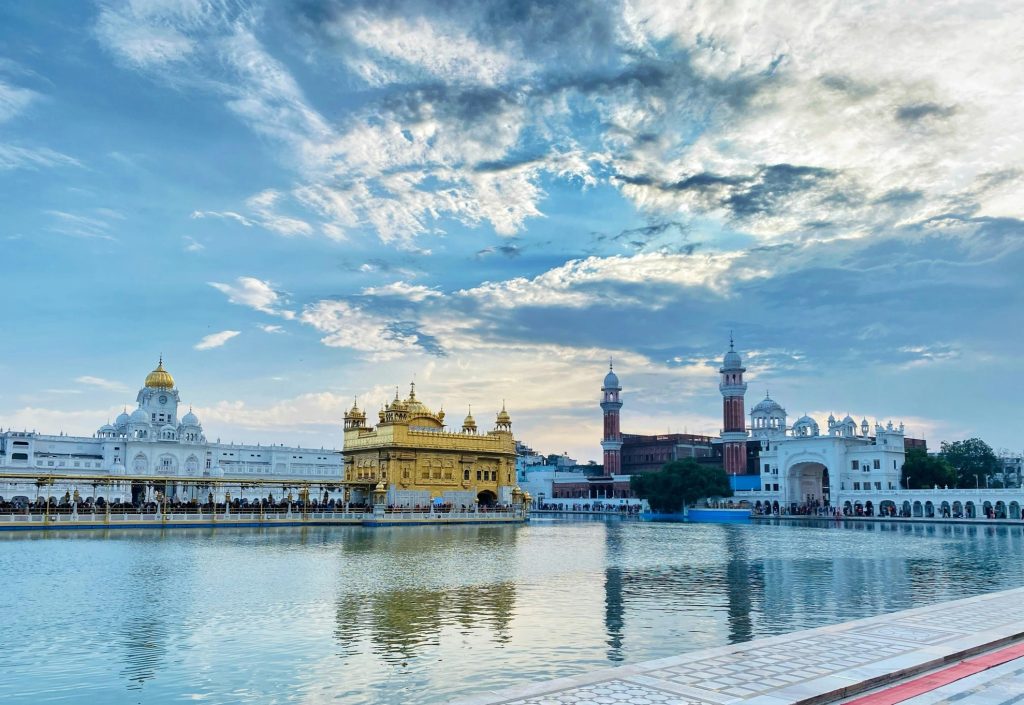
Amritsar stands as the spiritual as well as cultural center of Punjab and represents one of India’s top travel destinations. It is a memorable place known for its rich traditions, vibrant culture, and delicious food. After visiting this destination, it will surely become one of the most lively experiences of your life because both the people and the place are incredible. Beyond its spiritual significance, Amritsar lets you deep dive into India’s rich history and patriotism. With historic sites like Jallianwala Bagh and the unforgettable Wagah Border ceremony, Amritsar offers experiences that will imprint on your hearts forever. The city’s lively streets are filled with bustling bazaars, where you can buy traditional Phulkari embroidery, pick up handcrafted souvenirs for yourself, and soak in the vibrant local culture. And no trip to Amritsar is complete without indulging in its legendary food—whether it’s the buttery Amritsari kulcha, the flavorsome lassi, or the irresistible street-side chaat. This Amritsar travel guide will help you explore its best attractions, must-visit places, and exciting activities, ensuring you experience the true essence of this remarkable city. Top Must Visit Places in Amritsar: 1. Golden Temple: Golden Temple Known as the holiest Sikh shrine, is renowned for its golden architectural magnificence as well as its spiritual charm. Surrounded by the sacred Amrit Sarovar, it offers a serene and peaceful experience. Visitors numbering thousands can access daily langar service, which supports unity along with equality. The temple produces a stunning visual effect when its golden reflections appear on the water’s surface. The Golden Temple is a must-visit for anyone seeking spirituality, history, and architectural beauty. Beyond its divine ambiance, the temple complex also houses the Akal Takht, the highest seat of Sikh authority, and a museum showcasing the rich history of Sikhism. No matter when you visit this place, it is always beautiful and leaves everyone in awe of its beauty and spiritual aura. The Golden Temple offers serene and peaceful views. 2. Jallianwala Bagh: A historic site commemorating the tragic massacre of 1919 by British forces. Visitors can see the bullet-damaged walls and visit the Martyrs’ Well, which perpetually commemorates the past. An everlasting flame exists to honor every person who made the ultimate sacrifice. The Jallianwala Bagh Memorial has a museum which showcases historical documents with personal accounts and rare photographs. Walking through the garden is a powerful experience. It reminds visitors of the sacrifices made for India’s freedom. It is a place every history lover should visit. 3. Wagah Border The Wagah Border serves as a legendary international border that connects India with Pakistan. A former point of separation transformed into a space where patriotism flourishes alongside national unity and traditional customs. Amritsar tourism remains incomplete without experiencing the nightly Beating the Retreat ceremony. The Border Security Force (BSF) and Pakistan Rangers soldiers execute a synchronized parade while displaying perfect discipline and deep patriotism with strong enthusiasm. The event creates an energetic atmosphere because both sides of the audience generate loud, cheerful shouts while brandishing their national flags and performing national anthems. The ceremonial peak arrives when soldiers conduct the synchronized lowering of flags that belong to both nations. The ceremony concludes with the gates closing down, but its impact lasts well past the event’s end. The ceremony displays more than a big show because it helps recall the united past and the strong bond between both two nations. Despite past conflicts, the nations maintain periods of good relations during special events. During Diwali, along with Eid and Independence Day celebrations, soldiers share their greetings and sweets to demonstrate an ongoing spirit of brotherly love that transcends territorial boundaries. 4. Partition Museum: The Partition Museum in Amritsar exists as the world’s sole institution that showcases stories from the 1947 Partition. The museum displays personal items and handwritten messages alongside survivor accounts that illuminate history’s largest migration event. The museum uses historic Town Hall space to exhibit the past through interactive exhibits with rare historical photos and original newspaper clippings, which vividly showcase the era’s emotions. The ‘Tree of Hope’ stands out as a highlight of the museum because visitors can write messages about peace and unity there. This exhibition provides more than museum displays because it serves as an emotional homage to the heroic survivors of Partition. Visitors interested in Indian history and human heritage must visit this landmark. 5. RamBagh Gardens: The beautiful RamBagh Garden, built during the reign of Maharaja Ranjit Singh, served as his summer retreat. Visitors can take a peaceful walk through its lush greenery and enjoy the serene surroundings. The historic palace within the garden has now been converted into a museum. The museum displays unusual artifacts that belonged to the Sikh Empire, together with weapons and paintings. This location offers the perfect relaxation zone for experiencing Punjab’s royal heritage. RamBagh Garden is a quiet and beautiful place with green trees, small water pools, and nice walking paths to enjoy. Visitors can explore the life work of the legendary ruler through the Maharaja Ranjit Singh Museum inside the palace complex. Guests can relax in this peaceful garden as it is a quiet escape from the busy streets of Amritsar. 6. Gobindgarh Fort: Gobindgarh Fort presents Punjab’s cultural and martial accomplishments to visitors through cultural exhibitions that span military history. Gobindgarh Fort offers visitors two main attractions: the Sher-e-Punjab Museum and the ancient Toshakhana. Here at the 7D show, visitors experience an immersive presentation of remarkable Maharaja Ranjit Singh stories. Visitors can enjoy live performances like watching traditional Gatka martial arts, and experience folk dances. The light and sound show tells the fort’s incredible history, which makes the past feel alive. Here, Food stalls serve delicious Punjabi cuisine, which offers a perfect mix of history, culture, and entertainment. People who visit can also experience Punjabi culture through both handmade items and traditional food from the Haat Bazaar marketplace. Gobindgarh Fort stands as a must-see cultural attraction for both history enthusiasts and those who seek engaging entertainment in Amritsar. 7. Maharaja Ranjit
Reliving Zindagi Na Milegi Dobara: A Journey Through Spain’s Most Breathtaking Destinations

The Bollywood film Zindagi Na Milegi Dobara (ZNMD) serves as more than a cinematic experience because it functions as a motivational force which guides people toward an intense lifetime experience. Directed by Zoya Akhtar in 2011 this film guides characters on an unforgettable Spanish journey through explorations of friendship alongside adventure and self-discovery and travel excitement. The movie’s beautiful locations combined with thrilling sports adventures and heartfelt storylines burned themselves into everyone’s travel memories. Travelers who love both movies and Bollywood find a magical experience in touring the memorable sites from ZNMD. Throughout this motion picture Spain emerges as a country whose inhabitants love to live boldly by showing viewers La Tomatina with flying projectiles as well as skydiving and diving in Costa Brava’s clear water followed by the Running of the Bulls challenge in Pamplona. We will explore each exquisite travel destination from ZNMD alongside understanding their appeal as travel targets and learning about the best ways to replicate Hrithik Roshan, Farhan Akhtar and Abhay Deol’s experiences. 1. Costa Brava – The Stunning Mediterranean Paradise This Spanish coastal region named Costa Brava presents spectacular views with clean beaches and impressive cliffs and cute coastal towns. Arjun (Hrithik Roshan) conquers his aquatic phobia at this location by engaging in scuba diving activities. This film conveys Costa Brava’s Mediterranean tranquility so perfectly that visitors should prioritize visiting this area between nature and water sports activities. Why Visit? Tourists will find both calm activities and thrilling experiences at Costa Brava. Several water sports enthusiasts find a perfect home here because the region features secret bays, lively sea creatures and the beautiful Calella de Palafrugell among other charming towns. Costa Brava’s deep history combined with its medieval towns and renowned Catalan cuisine makes this location truly enchanting. Pro Tip: For the best scuba diving experience, head to the Medes Islands, a marine reserve with stunning underwater biodiversity. Visitors who seek a relaxed atmosphere can visit charming fishing towns to experience local seafood at beachfront restaurants. 2. Buñol – The Wild & Messy La Tomatina Festival La Tomatina made Buñol famous because this Spain-based food fighting festival has become their main attraction. One of the film’s most visually stunning sequences features the cast participating in a simulated version of La Tomatina festival. During August thousands of people assemble to organize an intense tomato throwing celebration. Why Visit? La Tomatina presents to its participants an opportunity they will never forget. The experience provides an unforgettable blend of excitement and uniqueness that you cannot find anywhere else. Buñol presents both La Tomatina and a delightful combination of medieval architecture and exciting cultural attractions for visitors to discover. Pro Tip: The La Tomatina festival limits its participant numbers so book your tickets in advance. Wear clothes you don’t mind getting messy because you’ll definitely end up with red stains from the tomatoes by evening’s end. 3. Seville – The Soul of Andalusia & The Flamenco Capital Seville functions as the capital of Andalusia while presenting itself through a fusion of music and historical landmarks coupled with an intense passion. The movie skillfully showcases Seville’s dynamic flamenco dancing art through Laila’s (Katrina Kaif) passionate introductions to the group about its dazzling performances. Seville exceeds flamenco with its amazing architecture together with its lively public squares along with its enthusiastic spirit. Why Visit? The Spanish national essence animates every part of this historic city. Every part of Seville shows its story through its major landmarks that include Plaza de España, Alcázar Palace and the Giralda Tower. Visitors can discover amazing food options throughout the city which feature both tapas and classic Spanish cuisine. Pro Tip: Plan your itinerary to witness flamenco dancing at Tablao El Arenal or Casa de la Memoria where you can discover authentic Andalusian culture through performance arts 4. Ronda – The Thrill of Skydiving Within ZNMD viewers witness one of the film’s most thrilling moments when characters engage in skydiving in the beautiful Andalusian town of Ronda. This life-changing experience gains its full impact through its placement against the dramatic cliff faces and awe-inspiring landscape views. Why Visit? People seeking adventure activities ought to visit Ronda. Apart from skydiving activities the town is known for its New Bridge that displays remarkable vistas of the El Tajo Gorge. Visitors should make Ronda a priority stop because it combines its historical depth with bullfighting culture and breathtaking natural setting. Pro Tip: Even if skydiving isn’t your thing, take a scenic walk along Puente Nuevo and explore the town’s charming streets for a glimpse into authentic Spanish culture. 5. Pamplona – The Legendary Running of the Bulls ZNMD reaches its crescendo through its final act in Pamplona which hosts the San Fermín Festival together with the yearly Running of the Bulls spectacle. Travelers from across the globe flock to Spanish annual celebrations which have been part of tradition since centuries. Why Visit? Pamplona exists as a town filled with historical significance along with exciting attractions. The city holds magnificent medieval Old Town as well as vibrant Spanish cuisine and energetic nightlife in addition to its bull run activities. Pro Tip: If you don’t want to run with the bulls then you should watch it from a balcony above the streets for a safe yet thrilling view of the action. FAQs About Zindagi Na Milegi Dobara’s Spain Filming Locations Where was Zindagi Na Milegi Dobara filmed? The movie was shot in various locations across Spain, including Barcelona, Costa Brava, Buñol, Seville, Ronda, and Pamplona. Is La Tomatina a real festival? Yes! La Tomatina is an annual festival held in Buñol, Spain, on the last Wednesday of August. Can tourists participate in the Running of the Bulls? Yes, but it’s a high-risk activity. Tourists can participate after registering and following strict safety guidelines. Where was the skydiving scene in ZNMD filmed? The skydiving scene was filmed in Ronda, a breathtaking town in Andalusia. How can I visit all the ZNMD shooting locations? A road trip through Spain is the
Rome Bucket List: Top Attractions, Food & Travel Tips
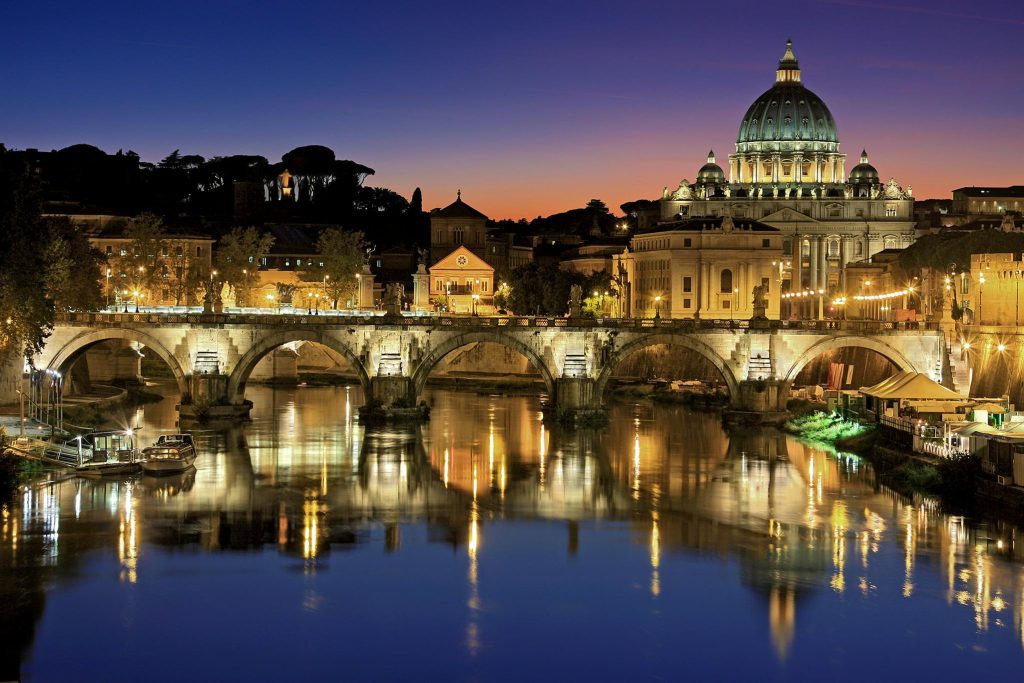
Rome is known to be the Eternal City. It is a destination where history and modernity smoothly blend together. From the magnificent Colosseum to the beauty of hidden alleyways, this city is a Hidden gem of experiences waiting to be explored. Whether you’re a History enthusiast, a food lover, or an adventurer, Rome has something to offer to everyone. This All-in-one guide will walk you through the best places to visit with all the top things to do, Authentic flavors to try, and essential travel tips to make the most of your Roman holiday. 1. Top Attractions in Rome: Must-Visit Landmarks The Colosseum The Colosseum is one of the most iconic landmarks in the world and a symbol of ancient Rome’s greatness. Built in 80 AD, this huge amphitheater once hosted gladiatorial combat which people came to watch with great enthusiasm. Today, you can’t see the combat and the way it used to be conducted but visitors can walk through its massive stone corridors, stand where warriors once stood, and imagine the passion of over 50,000 spectators cheering in excitement. Tip: To avoid long queues, visitors should consider booking a guided tour that includes access to the underground chambers and upper levels, so you don’t miss out on anything while being there. The Vatican City A trip to Rome is not complete without visiting Vatican City. the world’s smallest independent state and the spiritual center of Catholicism. You can also see the amazing ceiling paintings in the Sistine Chapel made by Michelangelo, and explore St. Peter’s Basilica which is known to be a masterpiece of Renaissance architecture. The Vatican Museums house has a huge collection of art, artifacts, and sculptures which makes it a must-visit for visitors who are culture enthusiasts. Tip:Here Be sure to reserve tickets in advance to skip the long lines. Piazza Navona Piazza Navona is a lively square surrounded by elegant Baroque architecture, some amazing outdoor cafés, and stunning fountains. The square was originally built as a stadium in ancient Rome but today it serves as a hub for street artists, musicians, and performers. Take a Peaceful stroll here, enjoy a gelato, or dine at one of the many restaurants which offers authentic Roman cuisine. The Pantheon The Pantheon is one of Rome’s best-preserved ancient buildings. It is a stunning example of Roman engineering and architectural brilliance. Originally it was built as a temple to the Roman gods but the Pantheon now serves as a church and a burial site for famous figures such as Raphael. The massive dome here with its central oculus allows the natural light to illuminate the grand interior which creates a breathtaking sight. Trevi Fountain The Trevi Fountain is one of the most famous fountains in the world. It is known for its stunning Baroque design and rich history. The Legend Says that tossing a coin over your left shoulder into the fountain will work like a thread that will pull you back to this place and will ensure your return to Rome. The fountain is beautifully illuminated at night and creates a magical atmosphere for visitors. When visiting here Don’t forget to capture some stunning photos of this breathtaking monument. 2. Hidden Gems in Rome: Secret Spots You Shouldn’t Miss Trastevere Trastevere is a stunning district known for its streets with stone paths, the buildings covered in beautiful vines, and a relaxed feel in the air. This area is perfect for those looking to experience Rome beyond its famous landmarks. Wander through its narrow alleys, Find some more hidden public squares, and enjoy a meal at a traditional restaurant. The nightlife here is also vibrant with local bars and live music which adds to the district’s magic. Aventine Keyhole For a unique experience you should visit the Aventine Keyhole on the Aventine Hill. When you look through the keyhole of the Knights of Malta gate, you’ll see a perfectly framed view of St. Peter’s Basilica which is surrounded by a lush garden pathway. This hidden gem is one of Rome’s most delightful secrets and something which is not known by everyone. Quartiere Coppedè Quartiere Coppedè is a less known area that feels like stepping into a dream.This unique district in Rome is a blend of Art Nouveau, medieval, and Baroque architecture.This charming neighborhood has the beautiful Fountain of the Frogs and offers a peaceful and magical experience. 3. Day Trips from Rome Tivoli Just an hour away from Rome you can visit Tivoli which is a home to Villa d’Este. It is famous for its stunning fountains and gardens, and Villa Adriana which is an ancient Roman retreat of Emperor Hadrian. It’s a perfect getaway for history and nature lovers. Ostia Antica This ancient Roman port city is well-preserved and shows how people lived in old Rome. take a Walk through the old streets, see ancient taverns, and admire the mosaics and amphitheater. Orvieto Orvieto is a short train ride from Rome. It has a beautiful cathedral, some underground caves, and amazing views of the Italian countryside. It’s a great place for a relaxing day trip. If you have time, you should definitely visit this place and explore it. 4. Food & Drink: A Culinary Journey Through Rome Best Roman Dishes to Try Carbonara: A creamy pasta dish made with eggs, Pecorino Romano cheese, pancetta, and black pepper. This has just authentic and rich flavors that will leave an imprint on you. Cacio e Pepe: A simple and delicious pasta dish with Pecorino cheese and black pepper which displays the beauty of minimal ingredients and how amazing these few things can make a dish. Supplì: A Roman street food favorite. These are deep-fried rice balls, which are stuffed with mozzarella and coated in crispy breadcrumbs. Pizza al Taglio: Rome’s unique pizza, it is served in rectangular slices and sold by weight. Tiramisu: A heavenly dessert made with coffee-soaked ladyfingers, mascarpone cheese, and cocoa powder. It’s a must have for all. Best Places to Eat in Rome For an authentic
BALI’S TOP TRAVEL PICKS: ICONIC AND HIDDEN GEMS!!

Bali, the “Island of the Gods” is a tropical paradise offering stunning beach fronts and traditional culture with its beautiful settings. Bali offers tourists a perfect place to explore its diverse range of must visit travel destinations from iconic to hidden sites. This blog will take you through the best places in Bali, including secret beaches, stunning waterfalls, ancient temples, and adventure spots. Best Time to Visit Bali: April to October (Dry Season): Best for beach activities, trekking, and sightseeing. November to March (Rainy Season): Best time for those who love lush green landscapes and fewer crowds. Iconic Tourist Attractions in Bali: 1. Ubud: Ubud, known as the cultural heart of Bali, showcases well-known aesthetic features which include scenic rice terraces, traditional architecture and historical temples. Bali is the ultimate haven for art lovers, yoga enthusiasts, and those seeking a spiritual retreat. This is a must visit destination to experience serene landscapes and a vibrant arts scene. Nearby Attractions & Activities: Goa Gajah (Elephant Cave) – A historical place with amazing rock carvings. Tegalalang Rice Terraces – Stunning terraced rice fields. Campuhan Ridge Walk – A scenic trekking path with serene views. 2. Gili Islands: The Gili Islands (Gili Trawangan, Gili Air, and Gili Meno) offer pristine white sandy beaches, crystal-clear waters, and incredible snorkeling spots. Gili Islands is the perfect spot to experience tropical beauty as there are no vehicles and offer both vibrant evenings and quiet tranquility. Nearby Attractions & Activities: Scuba Diving – Explore underwater coral gardens and shipwrecks. Bike Tours – Cycle around the islands. Snorkeling with sea turtles –The experience stands as an absolute must. 3. Canggu: Canggu is a lively coastal town that offers surf-friendly beaches, hip cafes, and energetic nightlife. This should be a must visit place for beach enthusiasts and nature lovers as it provides both relaxation and adventurous experiences. Nearby Attractions & Activities: Pererenan Beach – A peaceful beach with scenic landscapes. Tanah Lot Temple – A stunning seaside temple famous for sunset views. Horseback Riding – Ride through the black sand coast for an unforgettable journey. 4. Kuta: Kuta is one of Bali’s most famous destinations, known for its golden beaches, bustling nightlife, and surf-friendly waves.This place offers tourists an exciting scene with many amusement choices. Nearby Attractions & Activities: Waterbom Bali – One of the best water parks for thrill lovers. Legian Beach – A great spot for a more relaxed beach vibe. Beachwalk Shopping Center –Shopping mall with global brands and dining. 5. Nusa Lembongan: Nusa Lembongan is a peaceful island escape just off the coast of Bali, featuring dramatic cliffs, vibrant marine life, and crystal-clear waters. It offers an ideal setting for relaxation and is the perfect destination to experience Bali’s natural wonders away from crowds. Nearby Attractions & Activities: Nusa Penida – Kelingking Beach and Broken Beach. Nusa Ceningan – A beautiful island with stunning views. Mangrove Forest Tour – A peaceful kayaking experience through lush mangroves. Hidden Gems in Bali: For those who love to explore offbeat locations, here are some of Bali’s best-kept secrets: 1. Sidemen Valley: A peaceful alternative to Ubud, Sidemen Valley features lush rice fields, traditional villages, and scenic mountains. It’s perfect to escape the crowds and enjoy an authentic Balinese experience. Tourists can explore Balinese terrain while biking through rice paddies and stopping at traditional weaving studios and hiking to concealed waterfalls. 2. Banyu Wana Amertha Waterfall: Banyu Wana Amertha Waterfall is an underrated natural wonder featuring multiple waterfalls surrounded by lush jungle. People seeking a peaceful nature getaway will find Banyu Wana Amertha Waterfall as one of Bali’s most scenic hidden waterfalls. There are several other spots including Gitgit Waterfall and Ulun Danu Beratan Temple for travellers. 3. Tukad Cepung Waterfall: One of Bali’s most magical waterfalls, Tukad Cepung is a hidden gem located inside a cave, where sunlight creates a mesmerizing effect on the water. The trek to the waterfall is short but adventurous, passing through jungle pathways and rocky terrain. Nearby, you can also visit Tibumana Waterfall and Goa Rang Reng Waterfall for more nature adventures. Frequently Asked Questions (FAQs): Q1. What is the best time to visit Bali? The best time to visit Bali is from April to October for ideal beach weather, sightseeing, and outdoor activities. However, the rainy season from November to March offers less crowds and lush green landscapes. Q2. What are the must-visit temples in Bali? Must Visit temples include Besakih Temple, Tanah Lot, Tirta Empul, Goa Gajah and Uluwatu Temple for a glimpse into Bali’s rich cultural and spiritual heritage. Q3. What are the best islands near Bali to visit? The Gili Islands, Nusa Penida, Nusa Lembongan, and Nusa Ceningan offer stunning beaches, snorkeling spots, and adventure activities. Q4. How do I get around Bali? Travel around Bali using taxis, private drivers, scooter rentals or local shuttle services. Renting a scooter is a budget-friendly and flexible option, but ensure you have an international driving license. Q5. How much does a trip to Bali cost? Bali is a budget friendly option with tourists spending around $30–50 per day, while luxury travelers can expect to spend $150+ per day on accommodations, dining, and activities. Conclusion: Bali offers a perfect mix of adventure, culture, and relaxation. From iconic landmarks like Tanah Lot and Uluwatu Temple to hidden gems like Sidemen Valley and Tukad Cepung Waterfall.. Bali provides visitors with every experience they could want ranging from photogenic sites to adventure and tranquil hideaways. So pack your bags, plan your perfect Bali adventure, and get ready to explore the best places in Bali! Planning a trip? You are just one click away! Click here and let The Tarzan Way’s AI planner do the hassle for you. Let’s plan the best trip ever!
Santorini Unveiled: A Honeymooner’s Paradise of Romance
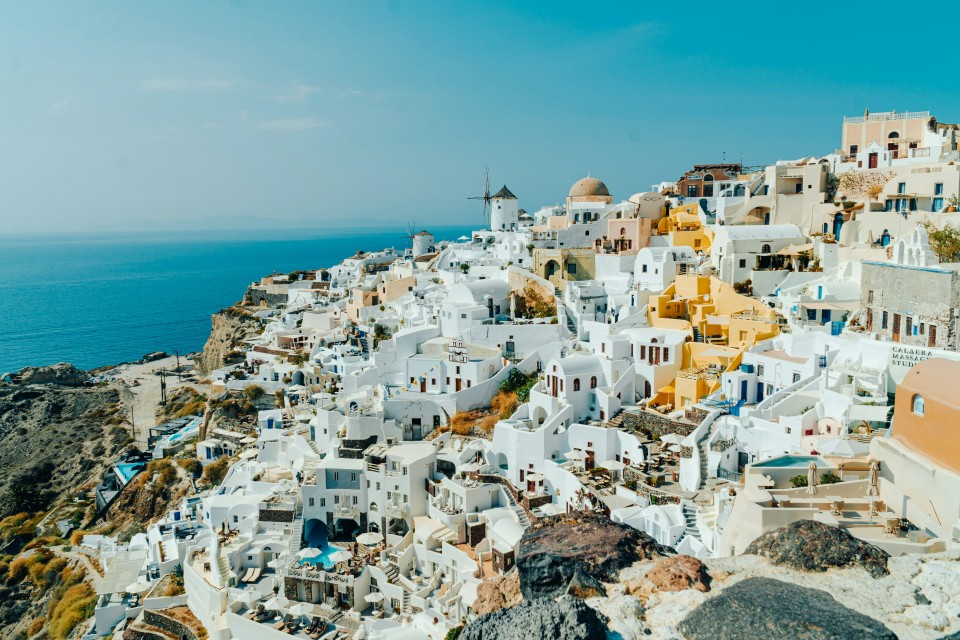
Immerse yourselves within the attraction of Santorini, Greece, wherein azure waters meet whitewashed cliffs. Known for its picturesque views and precise architecture, Santorini has grown to be synonymous with romance and is a dream destination for honeymooners. This island is a haven of intimacy, offering secluded spots, breathtaking views, and culturally rich studies that set the stage for a memorable honeymoon. Santorini In this, we’ll take you on an adventure via Santorini, highlighting hidden gem stones, intimate stays, and cultural adventures that make this island a honeymooner’s paradise. Let’s embark on an exploration of Santorini: A Honeymooner’s Paradise of Romance. Oia: The Iconic Cliffside Village No journey to Santorini is whole without a visit to Oia. This fascinating village is well-known for its whitewashed buildings, blue-domed churches, and beautiful sunsets. Stroll hand in hand along the slim streets, lined with boutique stores and cafes. Secluded Spot: Amoudi Bay Amoudi Bay Just beneath Oia lies Amoudi Bay, a hidden gem recognized for its crystal-clear waters and old-fashioned seafood tavernas. Take a dip within the bay or experience a romantic dinner with a backdrop of the colorful sunset. Fira: The Heart of Santorini Fira, the island’s capital, offers a mix of traditional and modern attractions. Explore the bustling streets coated with shops, cafes, and galleries. Fira, the island’s capital Visit the Orthodox Metropolitan Cathedral for a glimpse of lovely architecture. Secluded Spot: Skaros Rock Skaros Rock in Imerovigli For a secluded and panoramic view of the island, hike to Skaros Rock in Imerovigli, simply north of Fira. The path rewards you with breathtaking vistas of the caldera and surrounding islands. Plan a sunset hike for a virtually magical enjoyment. Intimate Stays: Luxury Retreats Santorini offers quite a number of intimate and expensive inns perfect for honeymooners. Opt for a non-public villa with a plunge pool and terrace overlooking the caldera. Some boutique resorts even provide non-public eating spaces. Secluded Spot: Megalochori Megalochori For a quieter life, do not forget Megalochori, a picturesque village acknowledged for its traditional structure and vineyards. Stay in a restored cave house or fascinating boutique motel for a peaceful retreat. Cultural Experiences for Honeymooners Santorini’s rich history and culture offer opportunities for precise stories. Explore ancient sites like Akrotiri, a well-preserved Minoan city, and Ancient Thera, an archaeological site. Akrotiri: A well-preserved Minoan city Secluded Spot: Pyrgos Visit the village of Pyrgos for a true glimpse into Santorini’s background. Climb the winding streets to the citadel ruins and enjoy panoramic perspectives. Pyrgos Discover neighborhood wineries and savor a wine tasting consultation collectively. Romantic Boat Tours Experience the island from a one-of-a-kind perspective with a romantic boat tour around the caldera. Many tours provide stops at Red Beach and White Beach, where you can loosen up in secluded spots and take in the lovely volcanic landscapes. Red Beach Secluded Spot: Thirassia Thirassia A boat excursion may additionally consist of a visit to Thirassia, a small island simply across the caldera from Oia. Here, you may revel in a quiet afternoon exploring the fascinating village or loosen up on a secluded seashore. Culinary Delights Santorini’s cuisine is a fusion of traditional Greek flavors and nearby ingredients. Dine at waterfront tavernas, trying dishes like fava (yellow cut-up pea puree), tomatokeftedes (tomato fritters), and sparkling seafood. Tomatokeftedes: Tomato fritters, Fava: Yellow cut-up pea puree Secluded Spot: Karterados Karterados: A village near Fira For an extra intimate eating experience, head to Karterados, a village near Fira, for a quiet dinner at a conventional taverna. Enjoy a candlelit meal and delight in the flavors of Santorini. Conclusion Santorini, with its spellbinding splendor, intimate settings, and cultural richness, provides the right backdrop for an unforgettable honeymoon. Whether you are looking for secluded spots, costly remains, or cultural reviews, this island has it all. Santorini: A honeymooner’s Paradise As you explore Santorini’s romantic corners, you will find yourselves captivated by its charm and immersed within the magic of your very own honeymoon paradise. Thanks for tuning in, and remember, the pleasant adventures take place off the overwhelmed route!
Lakshadweep Serenity: AI-Enhanced Beach Escapes

If you’re dreaming of a peaceful beach vacation, where soft sands meet calm waters and time feels slower, Lakshadweep might just be your answer. These islands, scattered across the Arabian Sea, remain one of India’s quietest and most untouched getaways. And now, thanks to a few smart tech tools, discovering this hidden paradise has never been easier—or more personal. The Calm of Lakshadweep’s Shores There’s something about Lakshadweep that feels different. Maybe it’s the silence, or how the sky blends into the sea with no skyscrapers in sight. Unlike the usual tourist-packed coastlines, this group of islands gives you space—space to breathe, relax, and just be. Each beach here has its own personality. Some are wide and welcoming, great for long walks or lazy afternoons. Others are tucked away, perfect for travelers who’d rather go off the map than follow a crowd. Planning your first trip? Take a look at Lakshadweep Revealed: An Essential Guide for First-Time Visitors — it’ll help you navigate entry permits, island hopping, and local customs without overwhelm. Beaches That Speak for Themselves A few of the best-known spots include: Agatti Beach – calm waters, white sands, and no noise except the wind. Ideal for swimming or just watching the sunset. Kavaratti Beach – livelier, but still peaceful. Water sports are popular here, so if you’re in the mood for kayaking or snorkeling, this is your place. Bangaram Island – uninhabited and untouched. You won’t find shops or cafes here—just sand, sea, and silence. For those planning a couple’s retreat, Romantic Escapes in Lakshadweep: Honeymoon Packages and Experiences in Lakshadweep covers candlelit dinners, private villas, and everything you need to turn your getaway into something unforgettable. What Lies Beneath: Coral Reefs & Atolls Above water, Lakshadweep is beautiful. Underwater? It’s something else. Minicoy Atoll offers calm, clear lagoons where schools of fish swim past like living art. Kadmat Atoll is a hit with divers—its coral reefs are bright, colorful, and full of life. Kiltan Atoll is more quiet and local, but the coral gardens here are just as magical. The best part? AI tools can now help you explore the sea more safely and smartly. Apps can point out coral species as you snorkel or alert you to eco-sensitive zones. They don’t replace a guide—but they make you feel more connected to the environment you’re in. We explored this tech-meets-nature magic in Lakshadweep: A Tropical Haven Mapped by AI, where the islands are navigated not just by maps, but intelligent planning. Let AI Help You Travel Smarter No, robots aren’t booking your hotel. But AI tools can make your Lakshadweep trip smoother. Want a day-by-day plan? You can use apps that build itineraries based on your travel dates, interests, and budget. Not sure what to pack? Tools that track weather and activities can help prep your bag with more than just flip-flops. Curious about what to expect? Virtual previews of resorts, dive sites, and beaches let you decide where to go before you even get there. If you’re someone who likes to keep things organized and stress-free, having a little tech on your side can make all the difference. More Than Just Beaches Lakshadweep isn’t only about white sand and blue water. There’s culture here too—quiet, simple, and deeply rooted in tradition. The Kavaratti Aquarium is a small but fascinating stop where you can see some of the sea creatures that live just offshore. Kalpeni Island offers more than beautiful views. If you’re lucky, you might catch a local dance or festival—small, welcoming, and full of heart. And when night falls? The skies here are unreal. With little light pollution, you can actually see the stars. Grab a mat, lie on the beach, and just look up. For night-sky lovers, Lakshadweep Mystique: Stargazing and Celestial Delights dives into all the best places and times to catch shooting stars and constellations. Great for Families Too People often think of Lakshadweep as a couple’s spot. And while it’s definitely romantic, it’s also a great place for families. Shallow waters make it safe for kids to swim. Many resorts have easy walking trails, and some offer educational nature walks and boat rides. If you’re traveling with parents or children, Lakshadweep Island – An All-Age Vacation Guide for Families breaks down how to make it fun for everyone—from toddlers to grandparents. In Closing: Peace Meets Personalization It’s hard to find places like this anymore. Lakshadweep doesn’t throw itself at you. It doesn’t rush. It lets you settle in—slowly. And with the help of a few smart travel tools, you can make the most of your time here without overplanning or missing what matters. If you’re ready to explore somewhere quiet, meaningful, and naturally stunning—without giving up the perks of smart planning—then Lakshadweep is waiting. Let The Tarzan Way help you plan the ultimate peaceful island escape—from curated itineraries to authentic stays, we’ve got your back.



